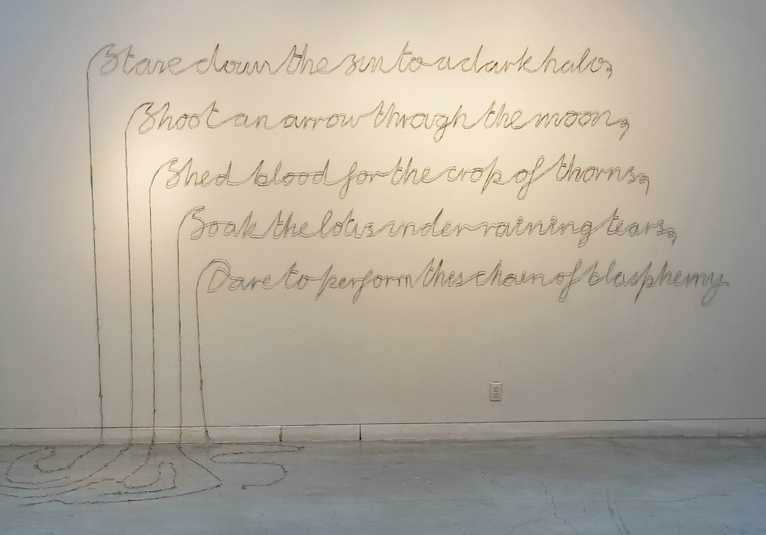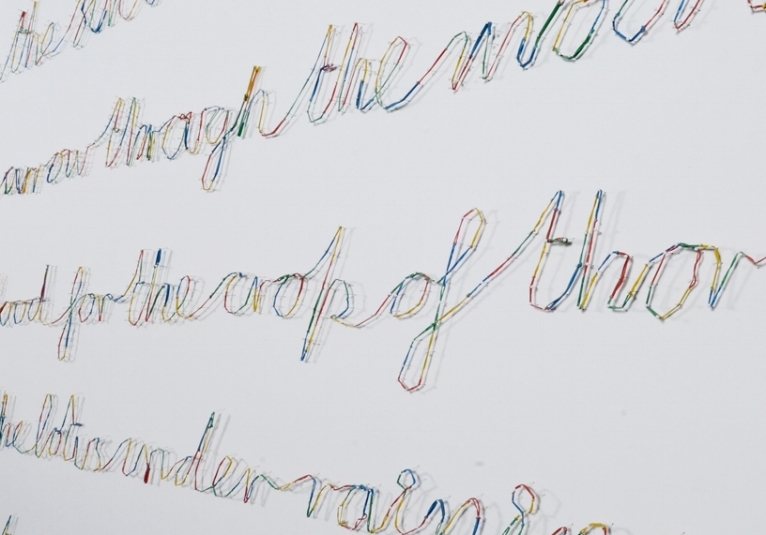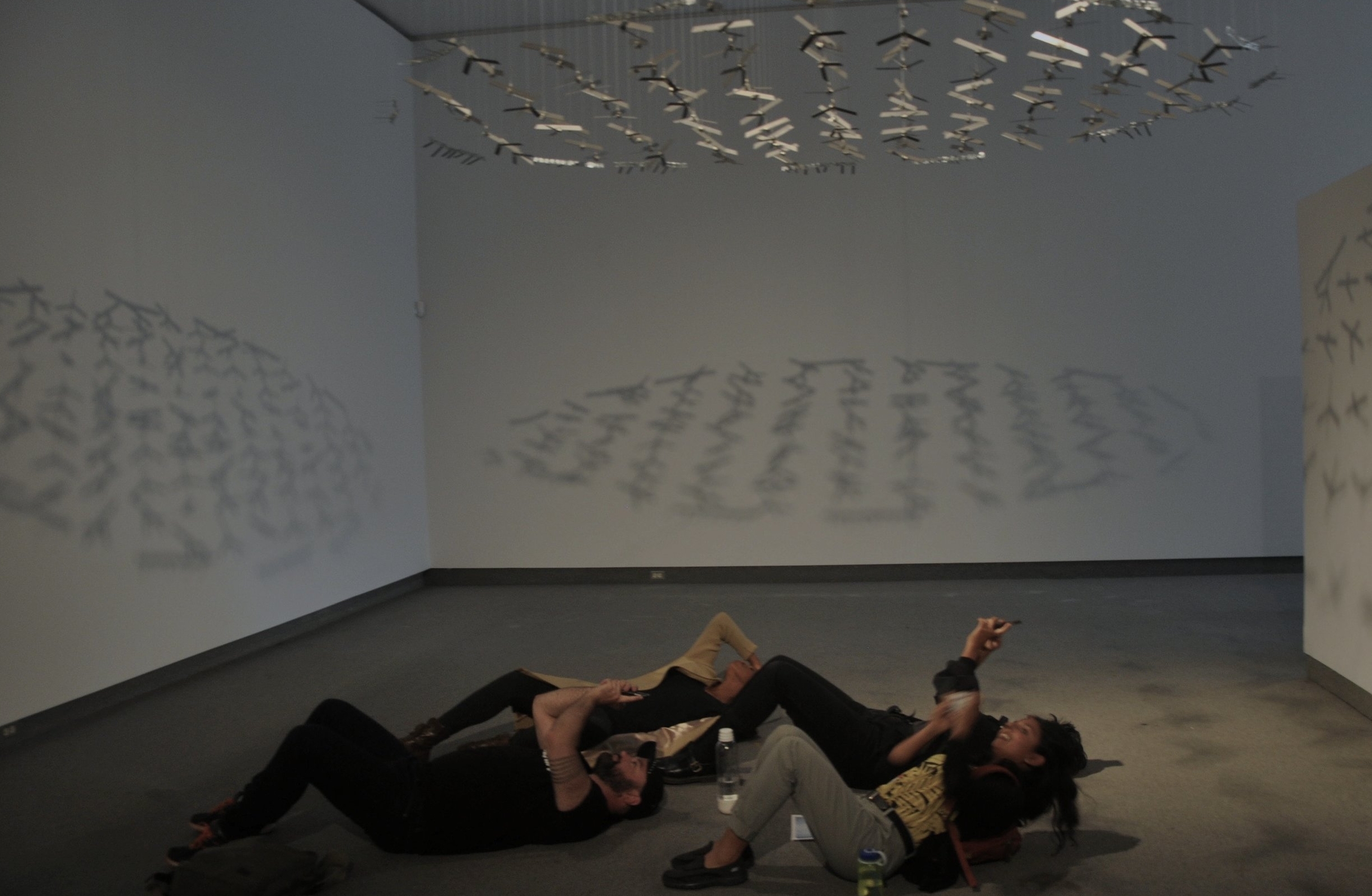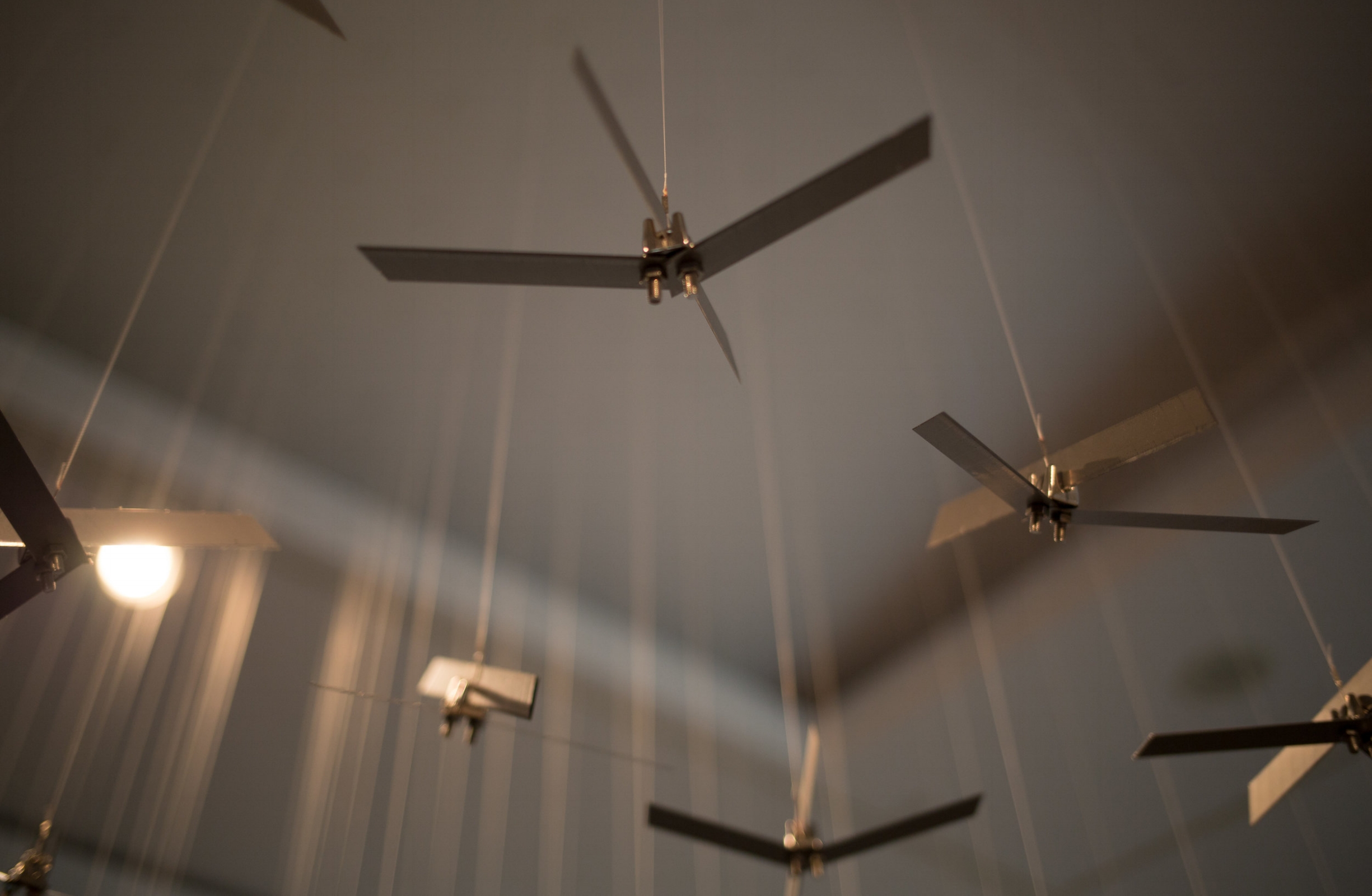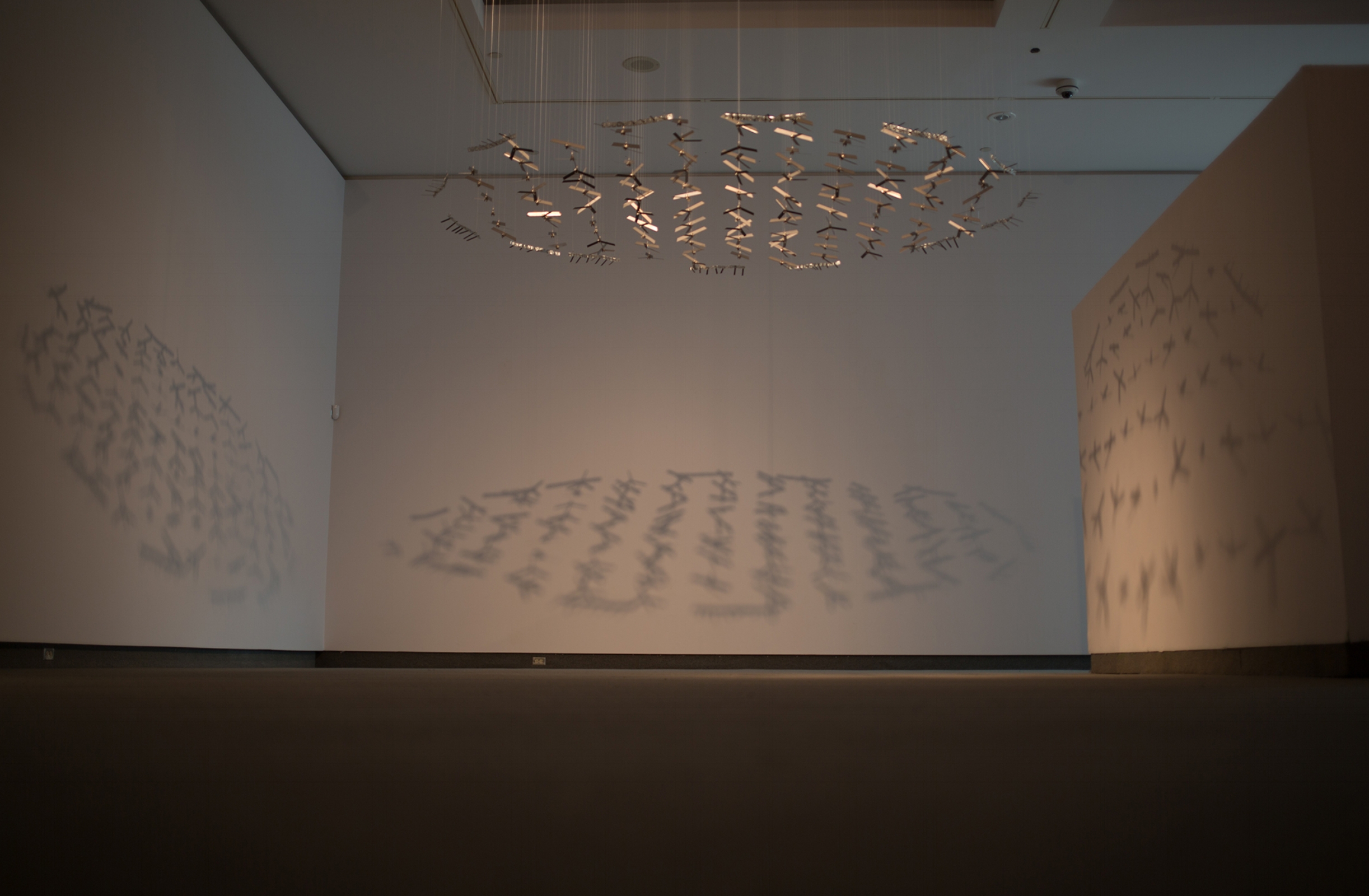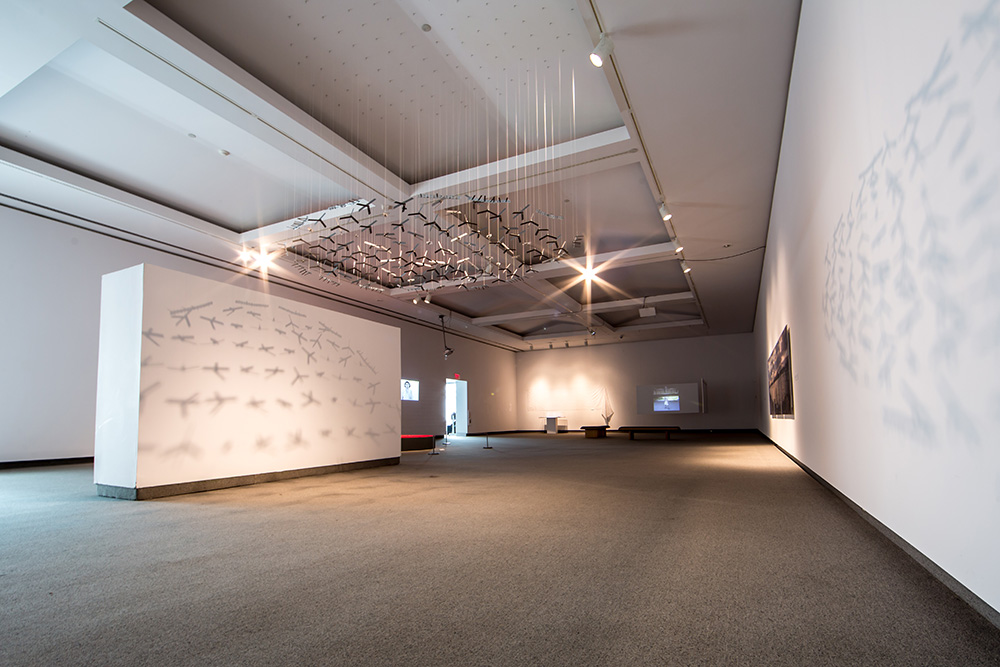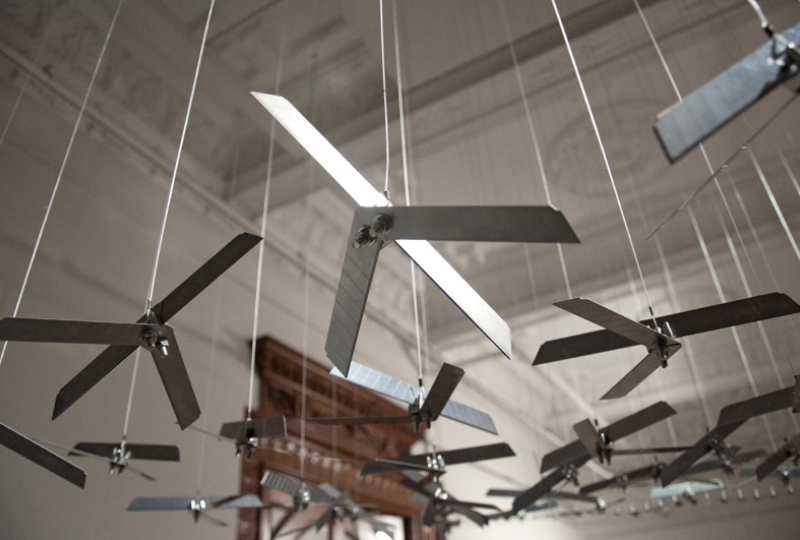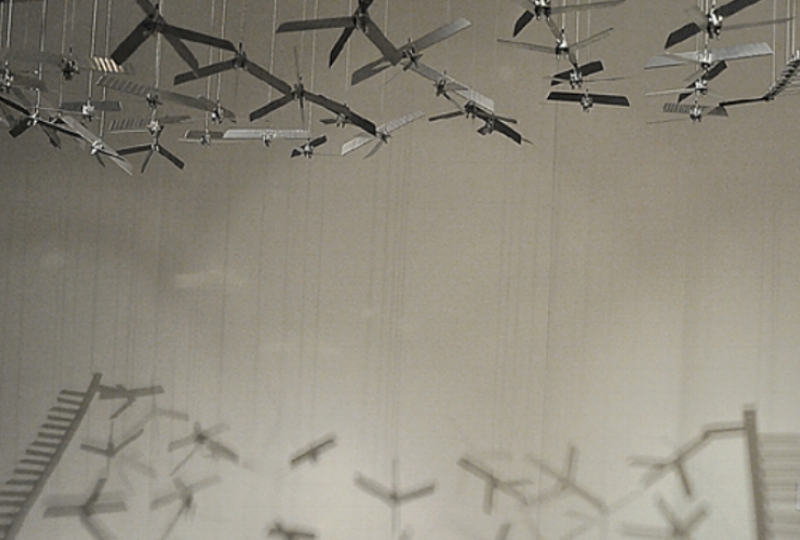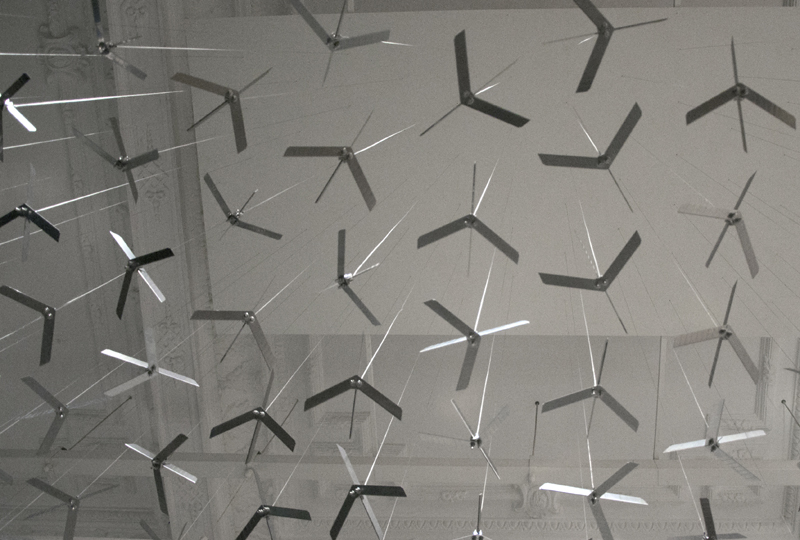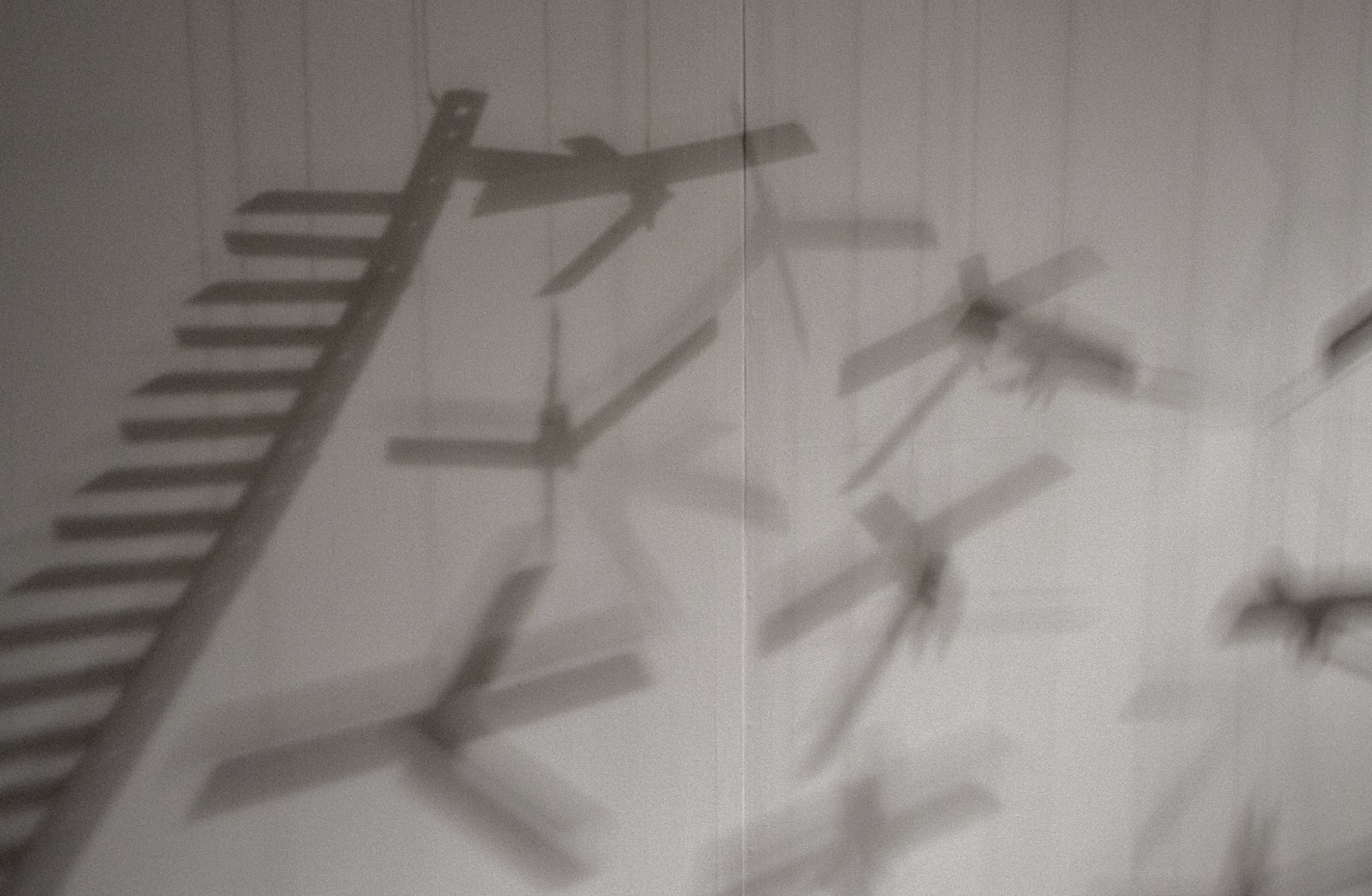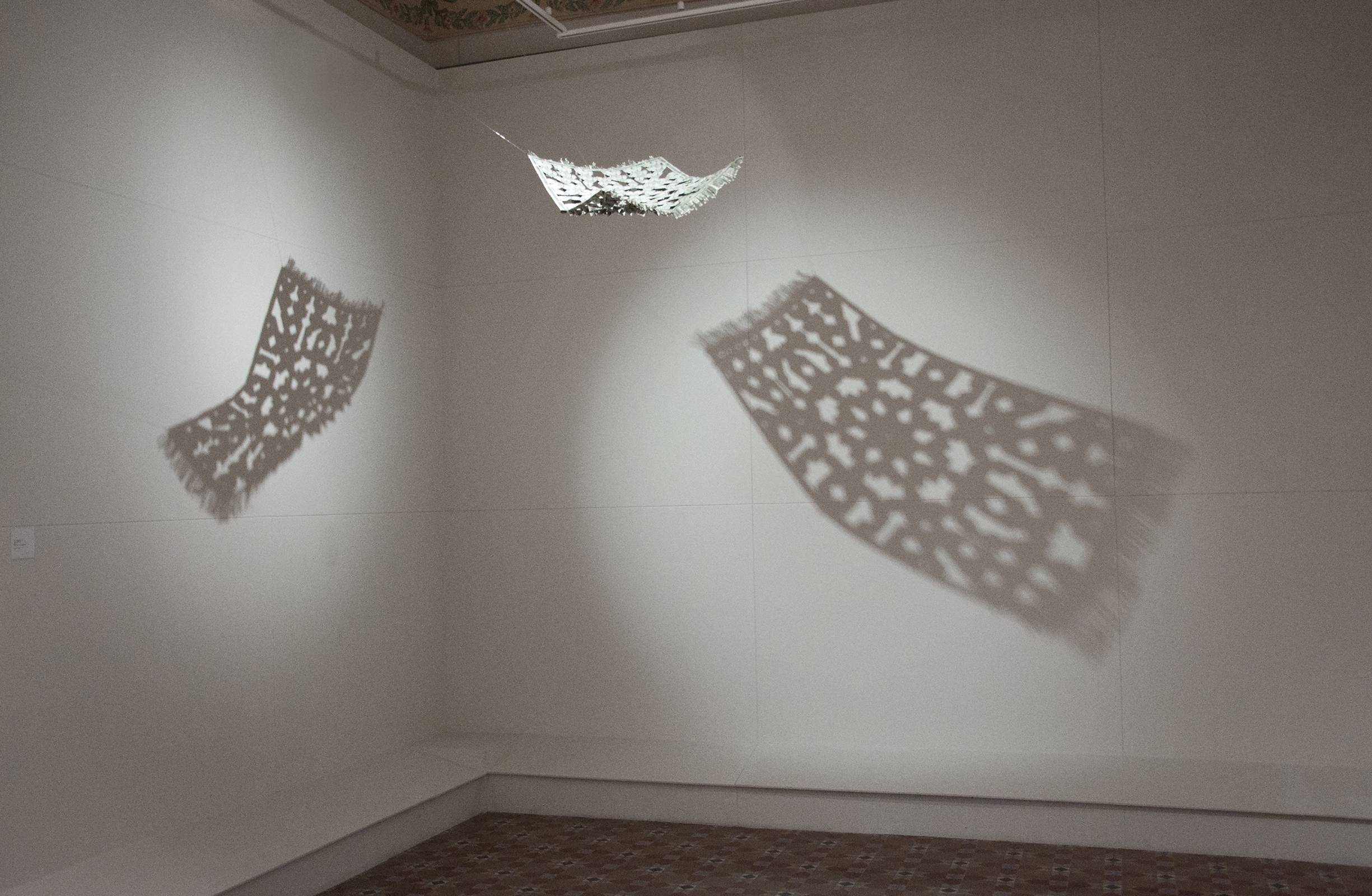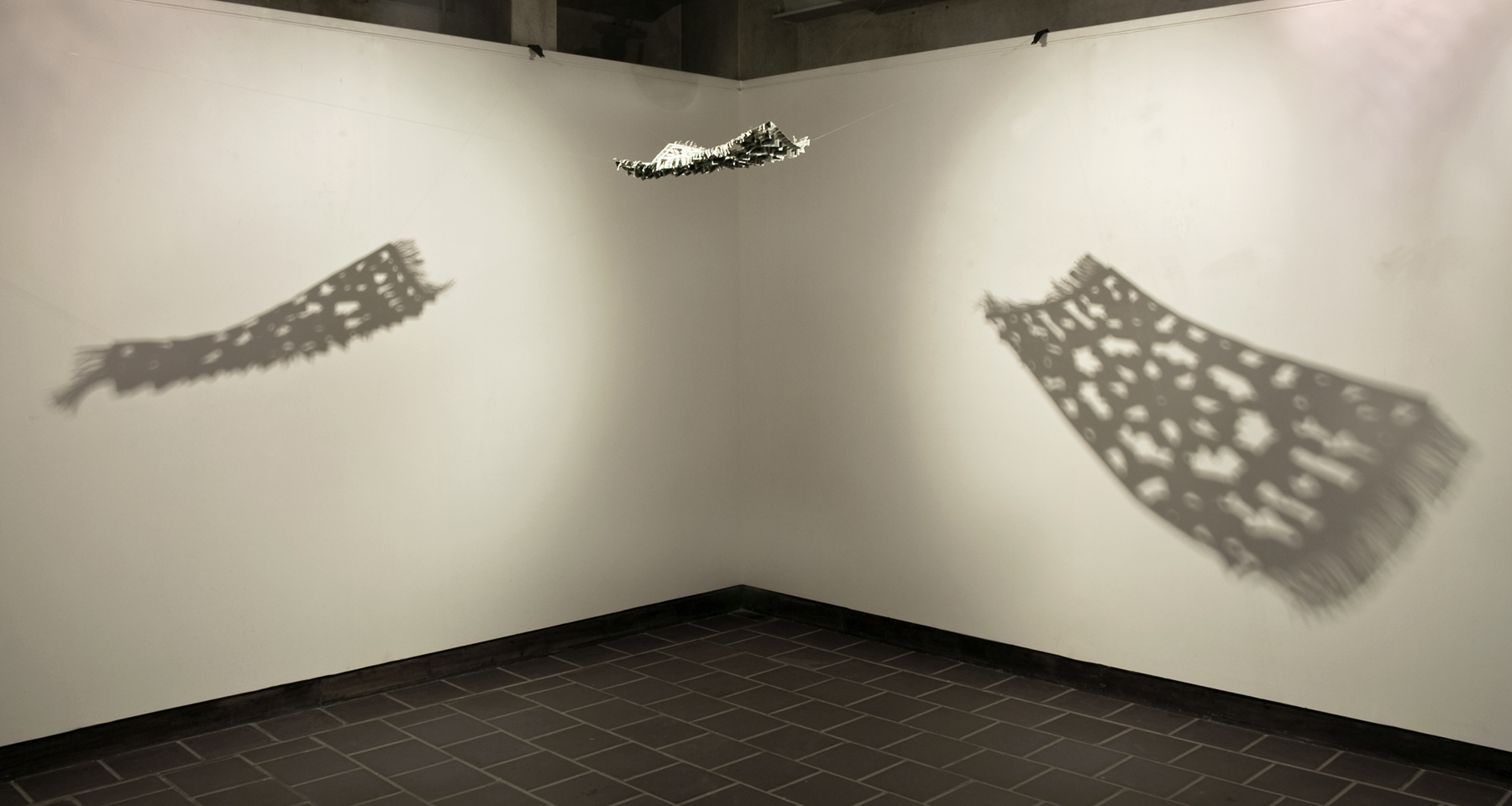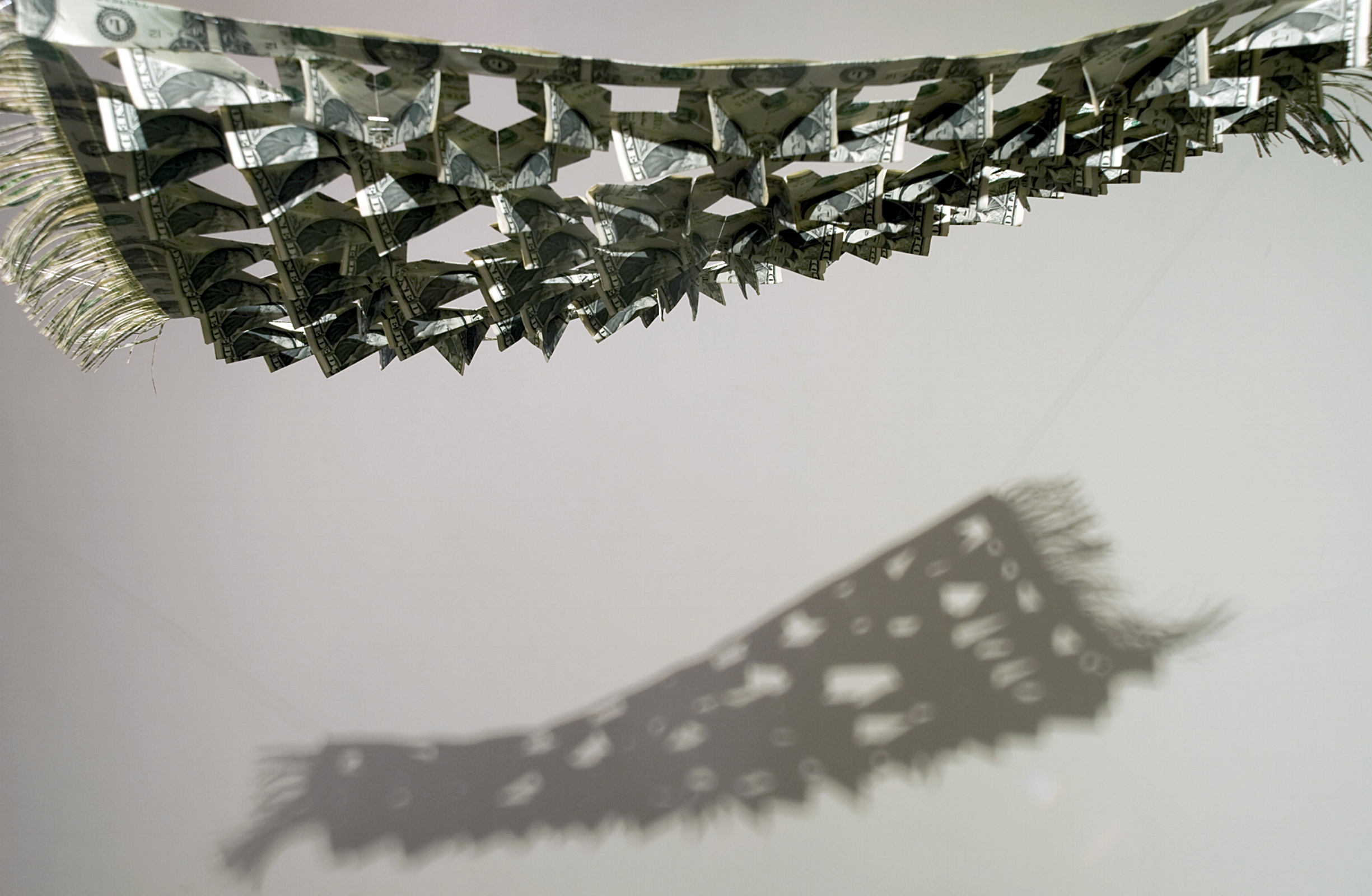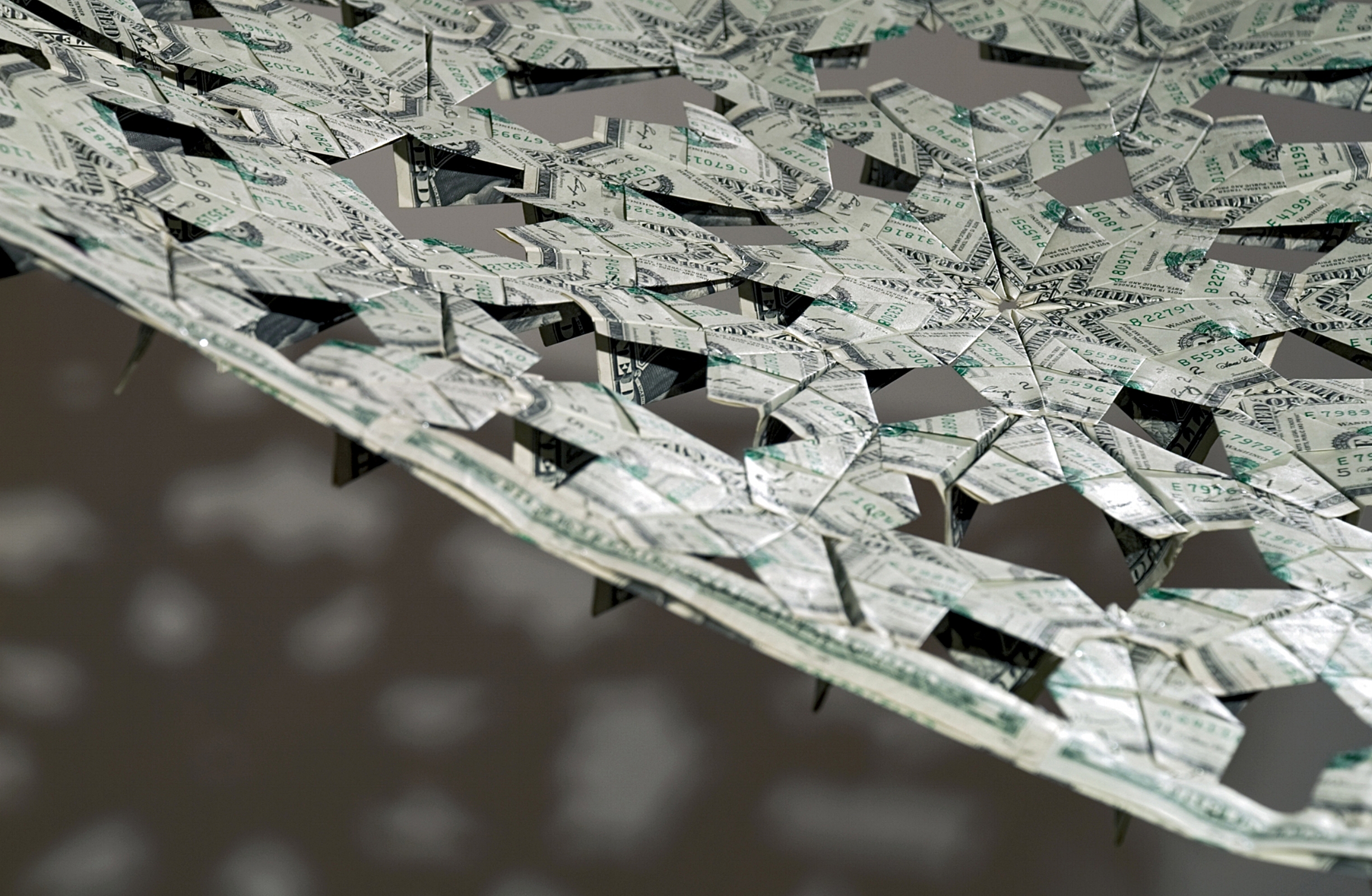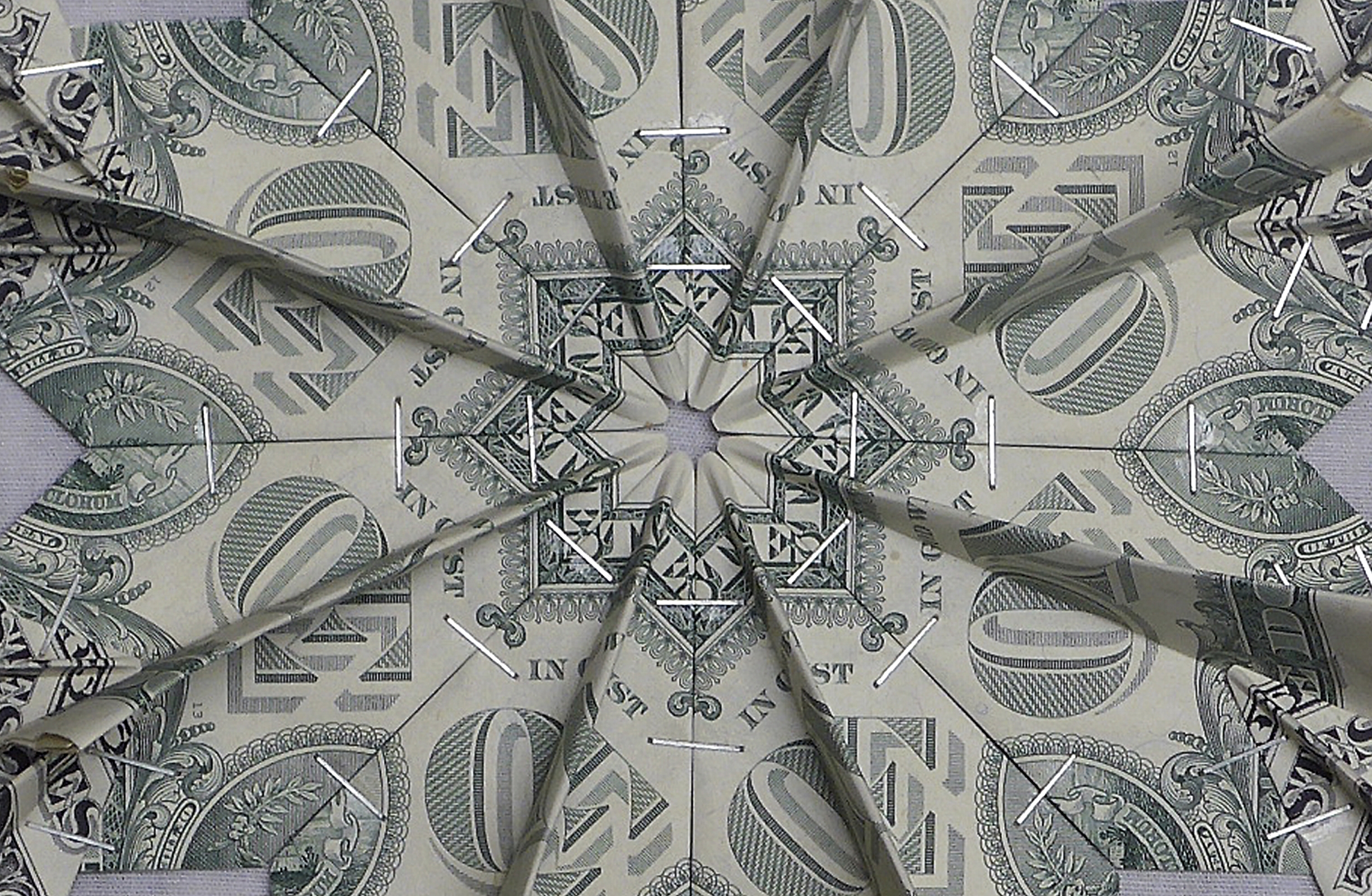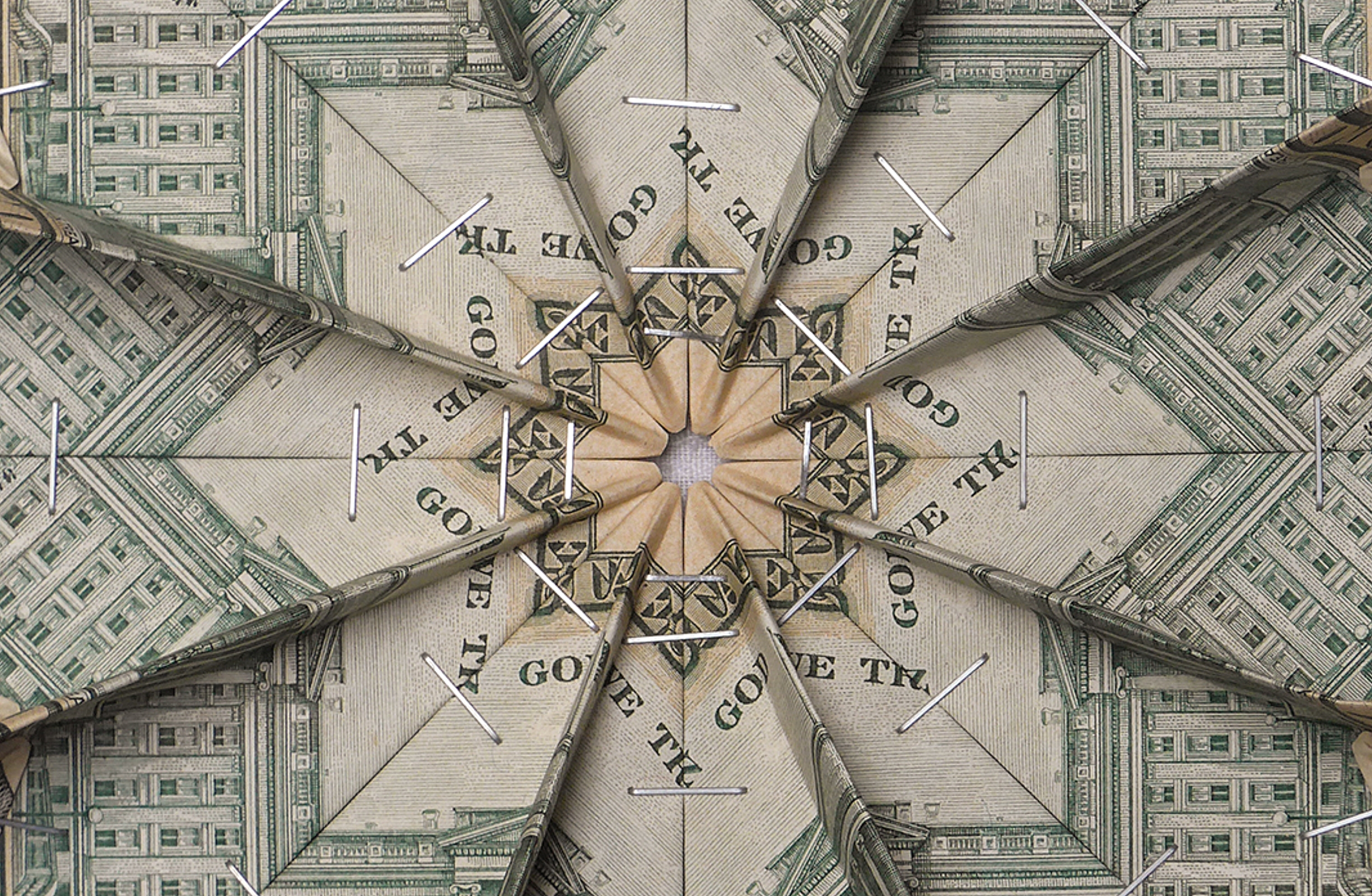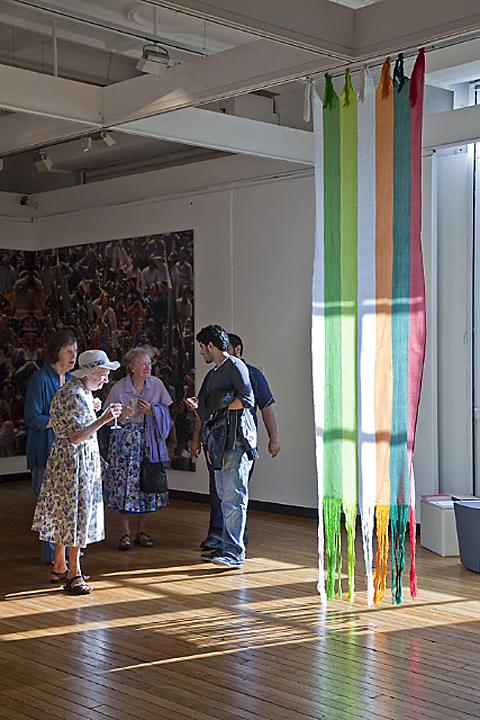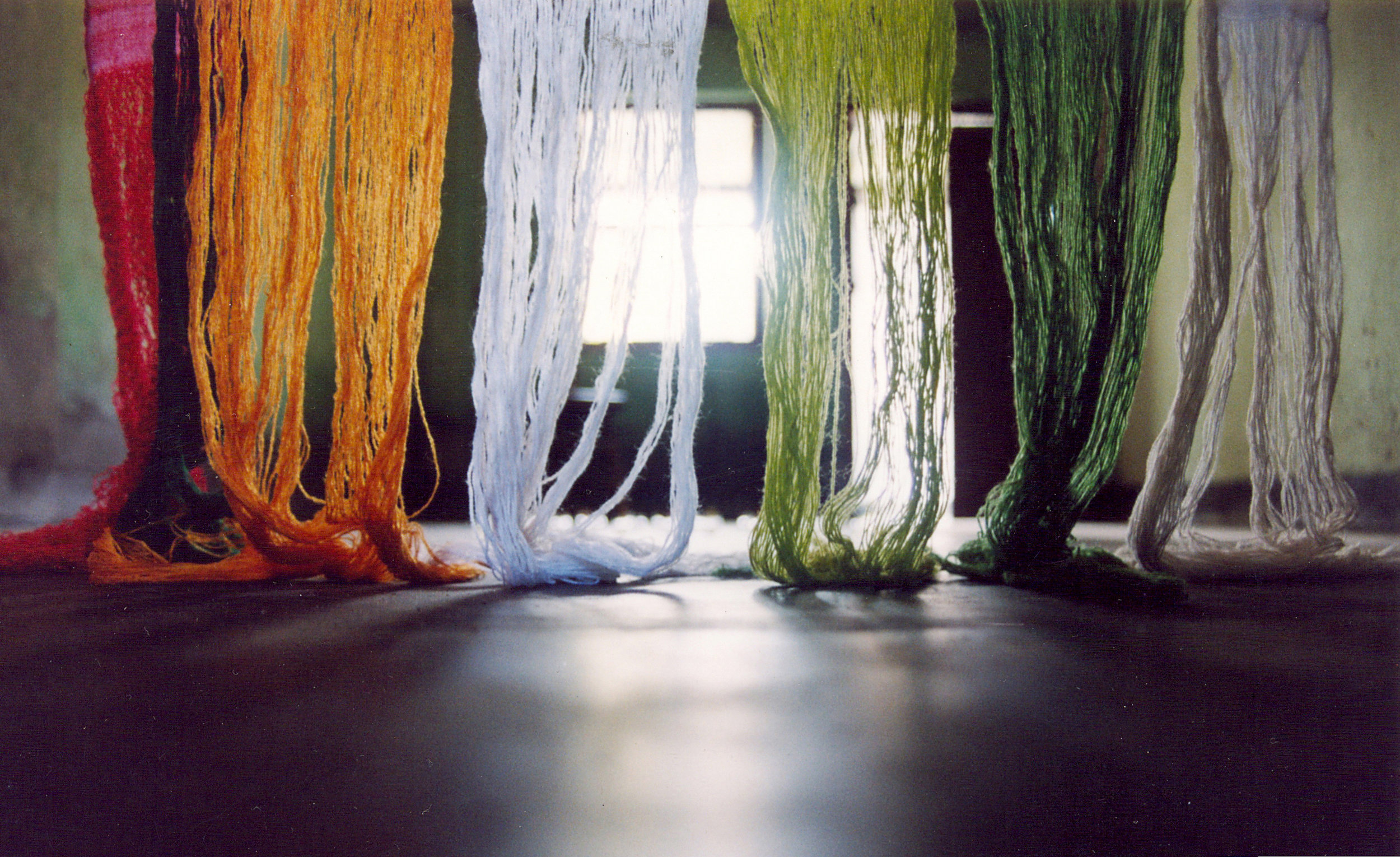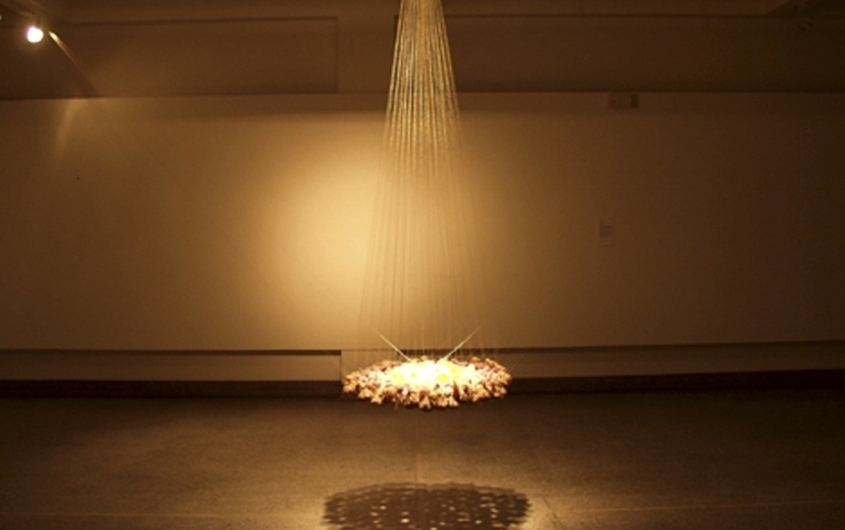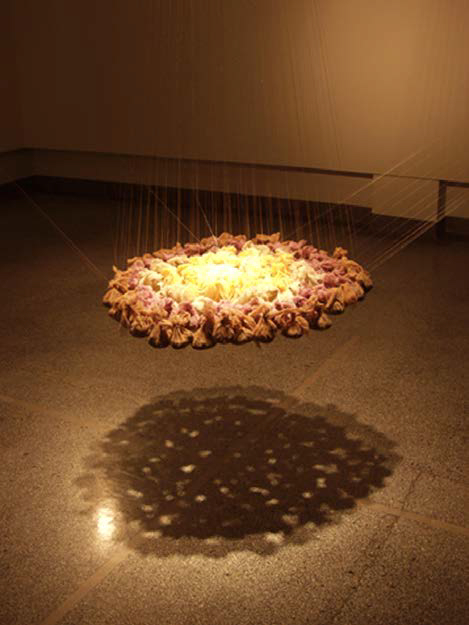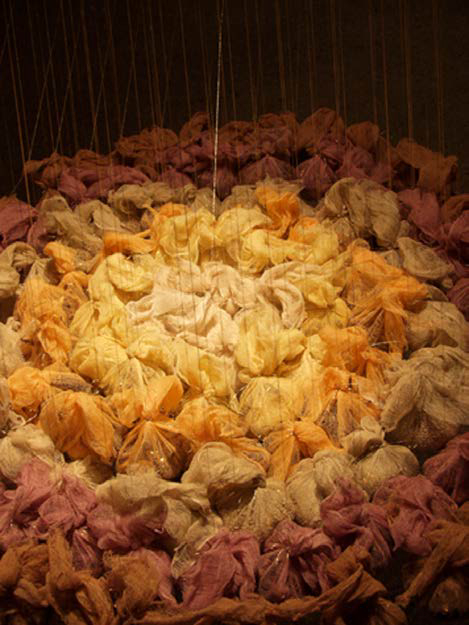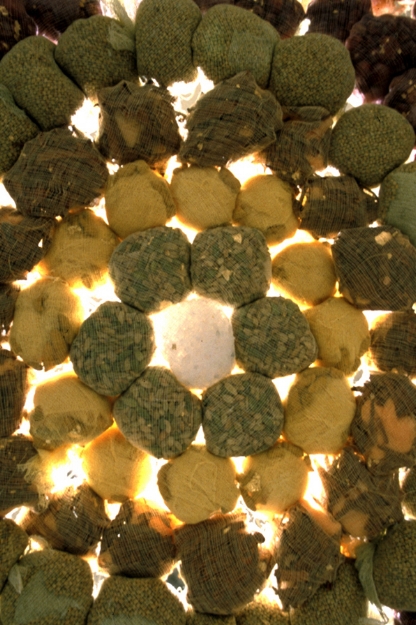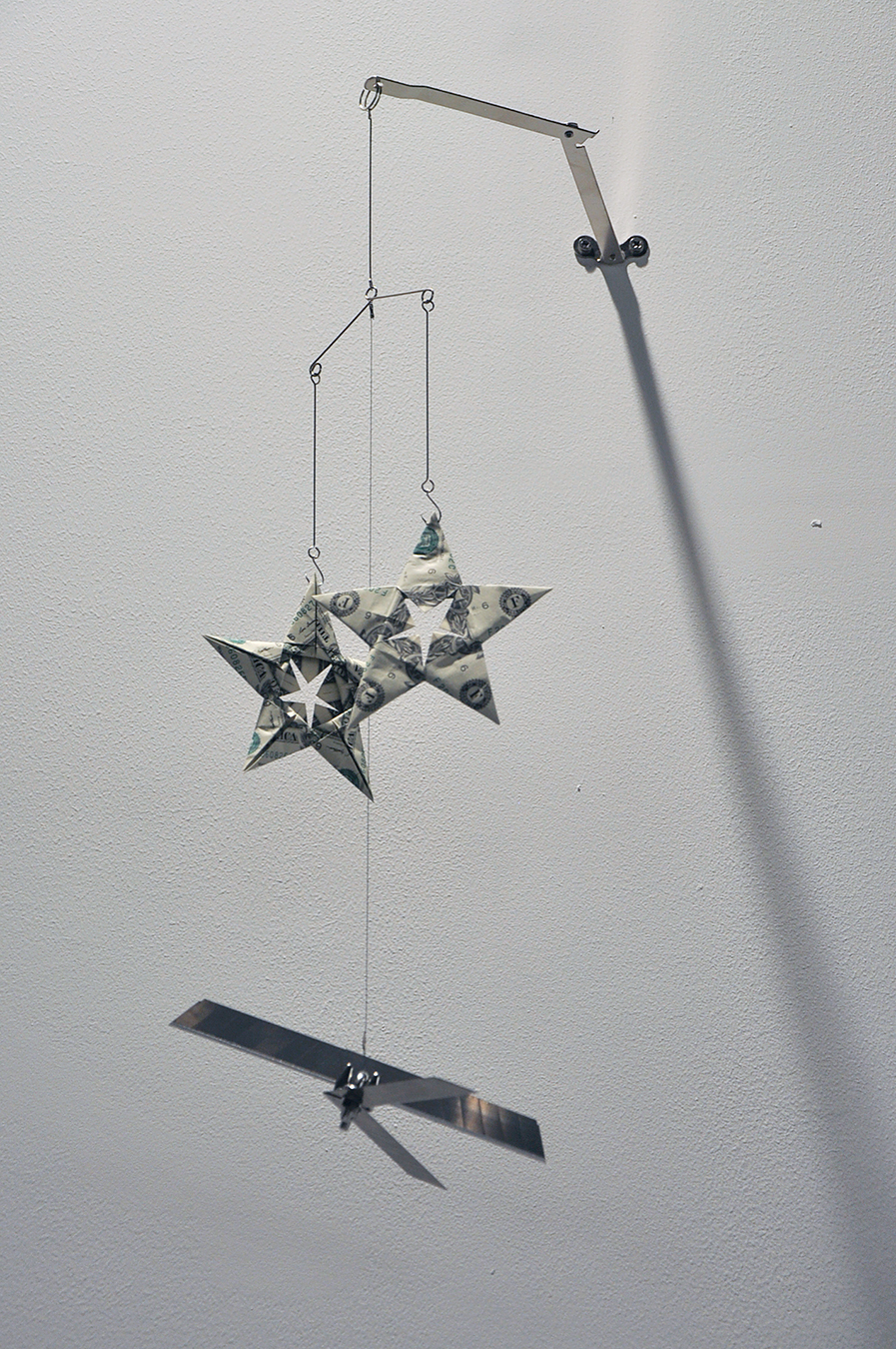
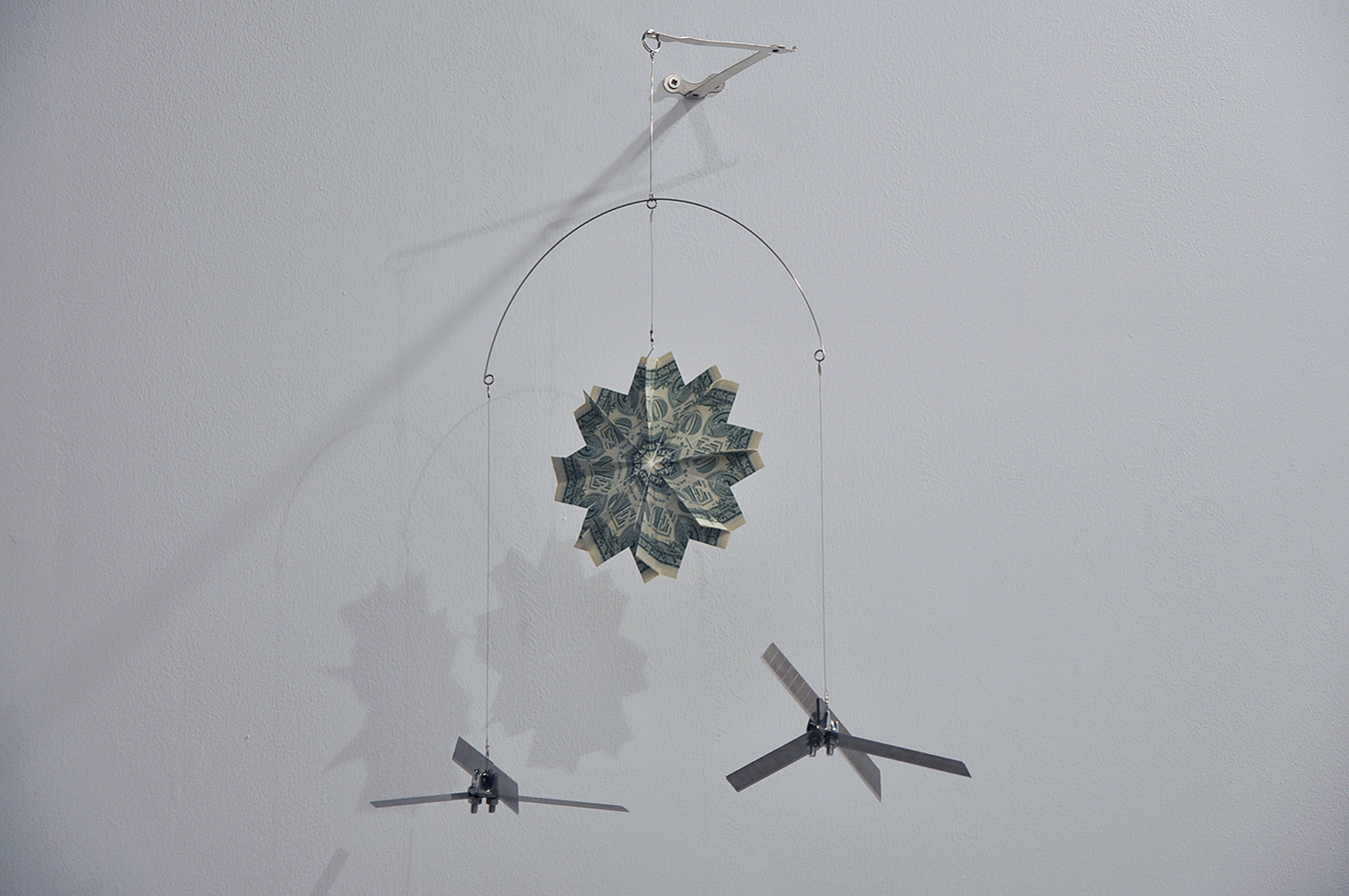
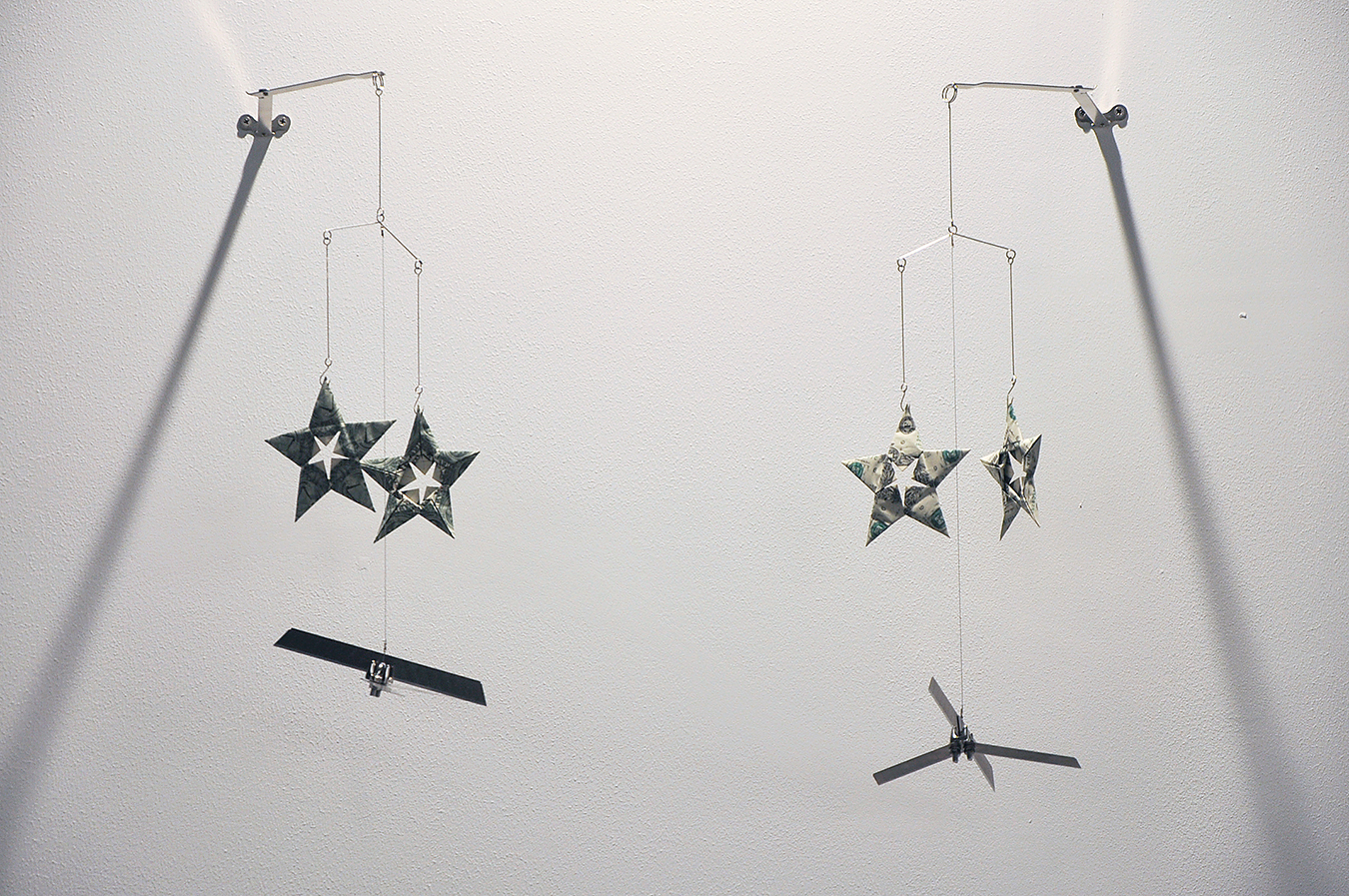
Twinkle Twinkle (2015) arises from the Flying Rug of Drone Mobiles (2009-) and consists of floating blade planes and folded US$ banknotes stars. Made from the altered children’s mobile toys and a reference to Alexander Calder’s iconic mobile works, Twinkle Twinkle lingers between a child’s wonderment and innocent rhyming of twinkling stars and the horror and macabre reality of today’s ongoing war and terror. The blade planes - a reference to the utility knife used to hijack - further transpires to bring attention to the menace of Drone planes or unmanned combat aerial vehicle (UCAV) and carpet bombing that has robed many cradles and killed many innocent civilian victims in countries like Pakistan and Yemen. Furthermore, once used mostly for sensitive and specialized military operations, drone planes are now a common sight on the shelves of children toy sections and are used in civil and recreational applications such as policing and surveillance, aerial filming, and drone games. The work argues that a weapon, weather a gun or a drone, once become part of the everyday life and placed in children’s hands as toys has the potential to desensitize kids to violence. It is thus not only important to find a responsible stance and international law to curtail the use of Drone plane but also to limit the exposure of such weapons, especially in younger kids.
